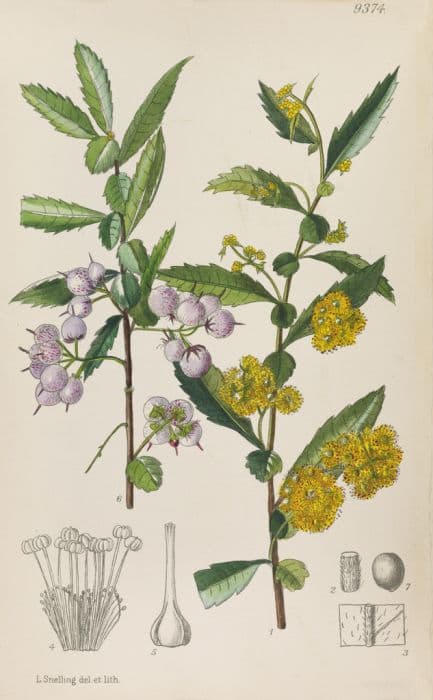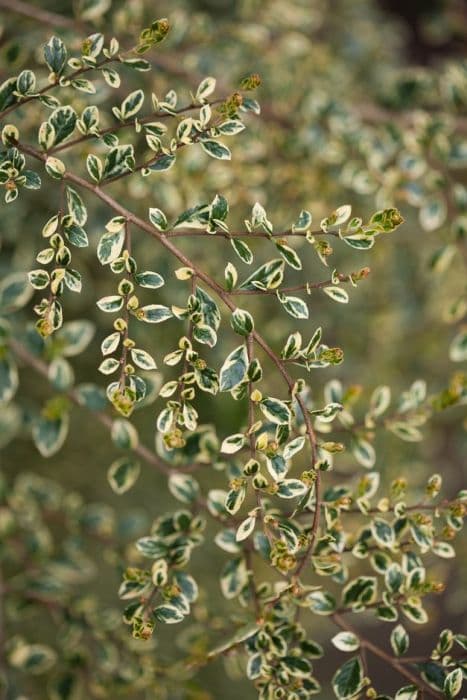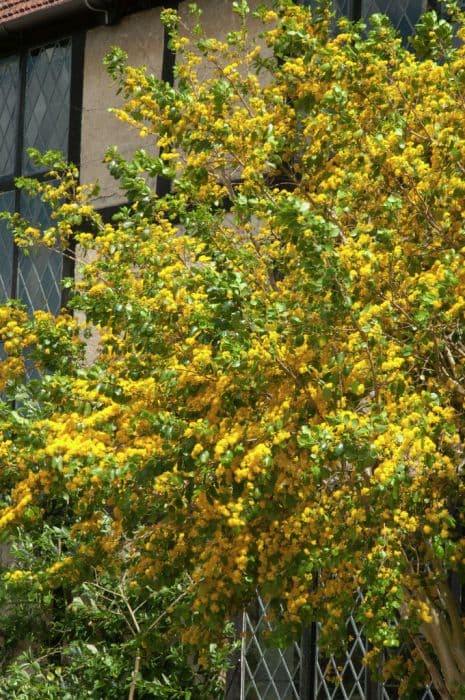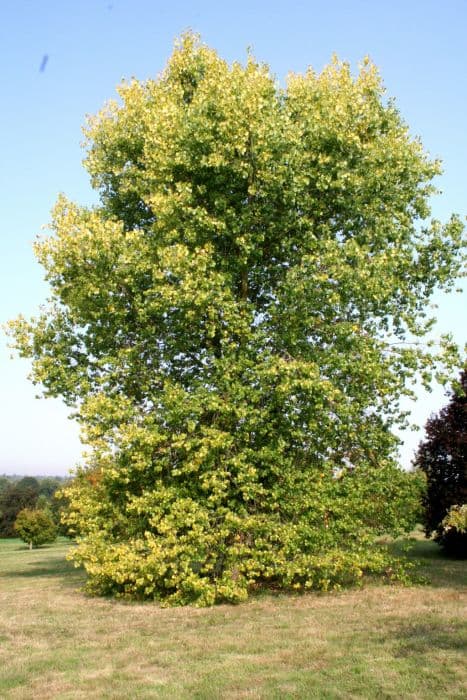Coral Bark Willow Salix × sepulcralis 'Erythroflexuosa' (m)

ABOUT
The plant known as the contorted willow is noted for its unique and intriguing appearance. Its most defining feature is the twisting and contorting of its branches, which create a striking visual effect in the landscape. The twigs on these branches often show a reddish hue that further accentuates the plant's visual interest, especially against the backdrop of winter's starkness. With the arrival of spring, the contorted willow produces narrow, elongated leaves that are a bright green color, adding a lively touch of freshness to the surroundings. This green foliage contrasts beautifully with the contorted branches. During the blooming period, the plant also displays modest flowers that may be of interest to local pollinators. Overall, the contorted willow's dramatic form and seasonal changes in color make it a noteworthy and decorative addition to any planting space.
About this plant
 Names
NamesFamily
Salicaceae
Synonyms
Scarlet Curls Willow, Twisted Willow, Contorted Willow
Common names
Salix × sepulcralis 'Erythroflexuosa'.
 Toxicity
ToxicityTo humans
The plant known as the golden weeping willow is not typically considered toxic to humans. There are generally no severe symptoms associated with the ingestion of parts of this plant. However, some people may have allergic reactions or sensitivities to salicin, a compound found in willows that is similar to aspirin. Such a reaction could lead to gastrointestinal upset or discomfort. It is always advisable to avoid ingesting plant material that is not explicitly intended for human consumption.
To pets
The golden weeping willow is not usually considered highly toxic to pets. However, it does contain salicin, which can be irritating or cause mild stomach upset if ingested in significant amounts. Symptoms of discomfort may include vomiting or diarrhea, but serious poisoning is rare. As with humans, pets should be discouraged from ingesting parts of ornamental plants.
 Characteristics
CharacteristicsLife cycle
Perennials
Foliage type
Deciduous
Color of leaves
Green
Height
20-30 feet (6-9 meters)
Spread
15-20 feet (4.5-6 meters)
Plant type
Tree
Hardiness zones
4-8
Native area
Hybrid origin
Benefits
 General Benefits
General Benefits- Ornamental Value: Salix × sepulcralis 'Erythroflexuosa', commonly known as the Golden Weeping Willow, is widely appreciated for its distinctive, contorted and brightly colored stems that provide year-round visual interest.
- Landscape Design Flexibility: It can be used in a variety of landscape settings, including as a focal point or to add height and texture to garden compositions.
- Shade Provision: The tree's extensive canopy provides generous shade during hot summer months, making it valuable for cooling purposes.
- Erosion Control: The strong root system helps stabilize soil and prevents erosion on riverbanks and slopes.
- Habitat Provision: It offers habitat and food for various wildlife, including birds and insects.
- Windbreak: When planted in rows, Golden Weeping Willows can act as a windbreak, protecting against soil erosion and damage to crops or property.
- Seasonal Interest: Its spring catkins and fall color give the tree seasonal interest, enriching the landscape across seasons.
 Medical Properties
Medical PropertiesThis plant is not used for medical purposes.
 Air-purifying Qualities
Air-purifying QualitiesThis plant is not specifically known for air purifying qualities.
 Other Uses
Other Uses- Living structures: The flexible branches of the Weeping willow can be woven to create living fences, arbors, or tunnels in the garden.
- Craft and basketry: Weeping willow branches are often used in the creation of woven baskets, furniture, and other decorative objects due to their pliability.
- Soil erosion control: The extensive root system of the Weeping willow helps stabilize soil near bodies of water and reduce erosion.
- Photography and painting: The unique twisted form and picturesque look of the Weeping willow 'Erythroflexuosa' make it a popular subject for photographers and artists.
- Wildlife habitat: Weeping willows provide shelter and nesting sites for birds, as well as habitat for other wildlife near waterways.
- Fish protection: The overhanging branches of the Weeping willow create shade over water, which can help protect fish from predators and high temperatures.
- Ritual and cultural significance: In some cultures, Weeping willow branches are used in ceremonies or as symbols of grief and mourning due to their drooping appearance.
- Dowsing: Some traditional water dowsers prefer branches from Weeping willows for their supposed water-finding abilities.
- Play structures: Children often use the long, trailing branches of Weeping willows as natural play areas, creating hideouts and secret spaces.
- Sound barrier: Dense plantings of Weeping willows can act as a natural sound barrier, helping to reduce traffic or neighborhood noise.
Interesting Facts
 Feng Shui
Feng ShuiThe Weeping Willow is not used in Feng Shui practice.
 Zodiac Sign Compitability
Zodiac Sign CompitabilityThe Weeping Willow is not used in astrology practice.
 Plant Symbolism
Plant Symbolism- Grieving: Salix × sepulcralis 'Erythroflexuosa', commonly known as the Weeping Willow, is often associated with mourning and sorrow, reflecting its drooping branches that can evoke the image of someone bent over in grief.
- Flexibility: This plant's flexible branches, which can bend without breaking, symbolize our ability to adapt and be resilient in the face of adversity.
- Healing: Historically, the Weeping Willow has been connected to healing, both physically and emotionally, as its bark has been used in traditional medicine and its presence in gardens can offer a tranquil space for reflection and recovery.
- Letting go: The Weeping Willow's appearance can also signify the importance of letting go of past burdens, much like its branches seem to gracefully release their load into the flowing waters below when planted near water bodies.
 Water
WaterThe Weeping Willow should be watered thoroughly, ensuring that the soil is kept consistently moist but not waterlogged. During the growing season in spring and summer, it might need watering as often as twice a week, depending on the climate. Each time, provide enough water to soak the ground around the root zone; approximately 10 to 15 gallons is suitable for an established tree. During the fall and winter, reduce watering to once every two to three weeks, or adjust according to rainfall, providing about 10 gallons each time to maintain moisture in the soil.
 Light
LightThe Weeping Willow thrives best in full sunlight, which means it should receive at least six hours of direct, unfiltered sunlight each day. An ideal spot would be an open area away from buildings or shade trees that could block sunlight. However, it can tolerate partial shade, so if full sunshine is not possible, a place with some afternoon shade would also be sufficient.
 Temperature
TemperatureThe Weeping Willow prefers a temperate climate and can withstand a wide range of temperatures. It is winter-hardy and can survive in temperatures as low as -20 to -30 degrees Fahrenheit. The optimal temperature for growth is between 65 and 75 degrees Fahrenheit, although it can tolerate summer heat exceeding 100 degrees Fahrenheit.
 Pruning
PruningThe Weeping Willow should be pruned for shape, to remove damaged or diseased branches, and to promote healthy growth. Pruning is best done in late winter or early spring before new growth starts. Remove any dead or broken branches, and thin out the canopy if necessary to improve sunlight penetration and air circulation. Prune sparingly, as over-pruning can stimulate excessive growth.
 Cleaning
CleaningNot needed
 Soil
SoilThe best soil mix for the Golden Weeping Willow should be moist, well-draining, and rich in organic matter. A mix of garden loam, peat, and sand in equal parts can be ideal. The soil pH should be between 5.5 and 8.0 to accommodate the Golden Weeping Willow's preferences.
 Repotting
RepottingGolden Weeping Willows are typically large trees and would not be repotted; they are planted directly into the ground. If grown in a container as a young plant, repot every 2-3 years into a larger pot until it is planted outdoors.
 Humidity & Misting
Humidity & MistingGolden Weeping Willow trees are tolerant of a wide range of humidity levels. They thrive in outdoor conditions where humidity is naturally regulated by the environment and do not require specific humidity adjustments.
 Suitable locations
Suitable locationsIndoor
Not suited for indoor growth; grows large.
Outdoor
Plant in moist, well-drained soil with full sun.
Hardiness zone
4-8 USDA
 Life cycle
Life cycleSalix × sepulcralis 'Erythroflexuosa', commonly known as the Golden Weeping Willow, begins its life cycle as a seed, although it is more often propagated from cuttings due to the hybrid nature of cultivated varieties. Upon planting, the cutting takes root and starts to grow, entering the vegetative stage where it develops a characteristic contorted and twisted stem with yellowish branches. This deciduous tree experiences annual growth, producing long, drooping branches with narrow, lance-shaped leaves that turn golden-yellow in fall. During the reproductive stage, typically in early spring, the Golden Weeping Willow produces flowers in the form of catkins, which are pollinated by the wind, leading to seed development. After seeding, the lifecycle starts anew when the released seeds germinate in suitable moist conditions. The tree reaches maturity in several years, and with a lifespan that can exceed several decades, it enters a period of senescence before ultimately dying, completing its life cycle.
 Propogation
PropogationPropogation time
Early spring
Salix × sepulcralis 'Erythroflexuosa', commonly known as the golden weeping willow, is most commonly propagated by cuttings. The best time for taking cuttings is in the late winter or early spring before the willow begins to leaf out. Cuttings should be approximately 10 inches (about 25 cm) in length, taken from healthy, new growth, and should include several buds. These cuttings can be directly placed in moist soil where they typically root with high success rates, especially if the bottom ends are treated with a rooting hormone powder or solution. Placing the cuttings in water can also encourage root development before they are transplanted into soil.









